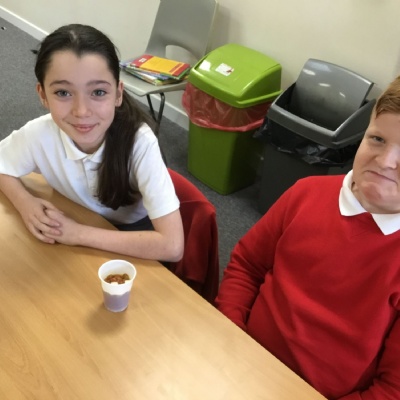YEAR 6 SCIENCE!

In science so far this half term, we have been looking at our circulatory system. We have looked in depth at blood, and what it is made up of
We now know that our blood is made up of the following parts: red blood cells, white blood cells, plasma and platelets. (Quick, test us on what the function of each element is!)
We have learnt that plasma is the yellowish liquid portion of the blood that contains electrolytes, nutrients and vitamins and hormones as well as all the other compartments of blood listed above.
We also know that red blood cells carry oxygen from your lungs to your heart, and then to your muscles. They also help to remove the carbon dioxide from the body. Red blood cells have no nucleus and a biconcave shape to give the most space for oxygen. We like to remember the function of the red blood cells by referring to them as the body’s ‘postman’ – delivering oxygen from your lungs to your heart and muscles!
White blood cells, otherwise known as Leukocyte, are part of the immune system and protect the body from infections. This is done by certain types of white blood cells producing antibodies to fight the infections. White blood cells are clever – they can produce cells called lymphocytes that can produce “memory cells” so that if the body is infected again, it can fight it quickly. Our way of remembering their roles is referring to them as the ‘police men’ of our circulatory system; they fight off the danger!
Another element of blood is our body’s ‘doctor’. These are called platelets and they help the blood to clot, which is called hemostasis, which is the process of stopping blood flowing out from our wounds.
Last week, we made our own blood. We used different products to represent the different elements. For the red blood cells, we used cheerios as they are dome-shaped like red blood cells. We added red food colouring (for obvious reasons!).
We also used marshmallows. These represented the white blood cells as they have the ability to absorb (WBC swallow up pathogens and bugs). Porridge was used as platelets because it clogs up and clots. Finally, we used water with yellow food colouring as the plasma because 90% of plasma is water!
Click HERE to see some pictures of our messy creations. We know that we would only see these elements using a microscope and thankfully, our blood doesn’t smell as bad as these plastic cups of ‘blood’ did!
